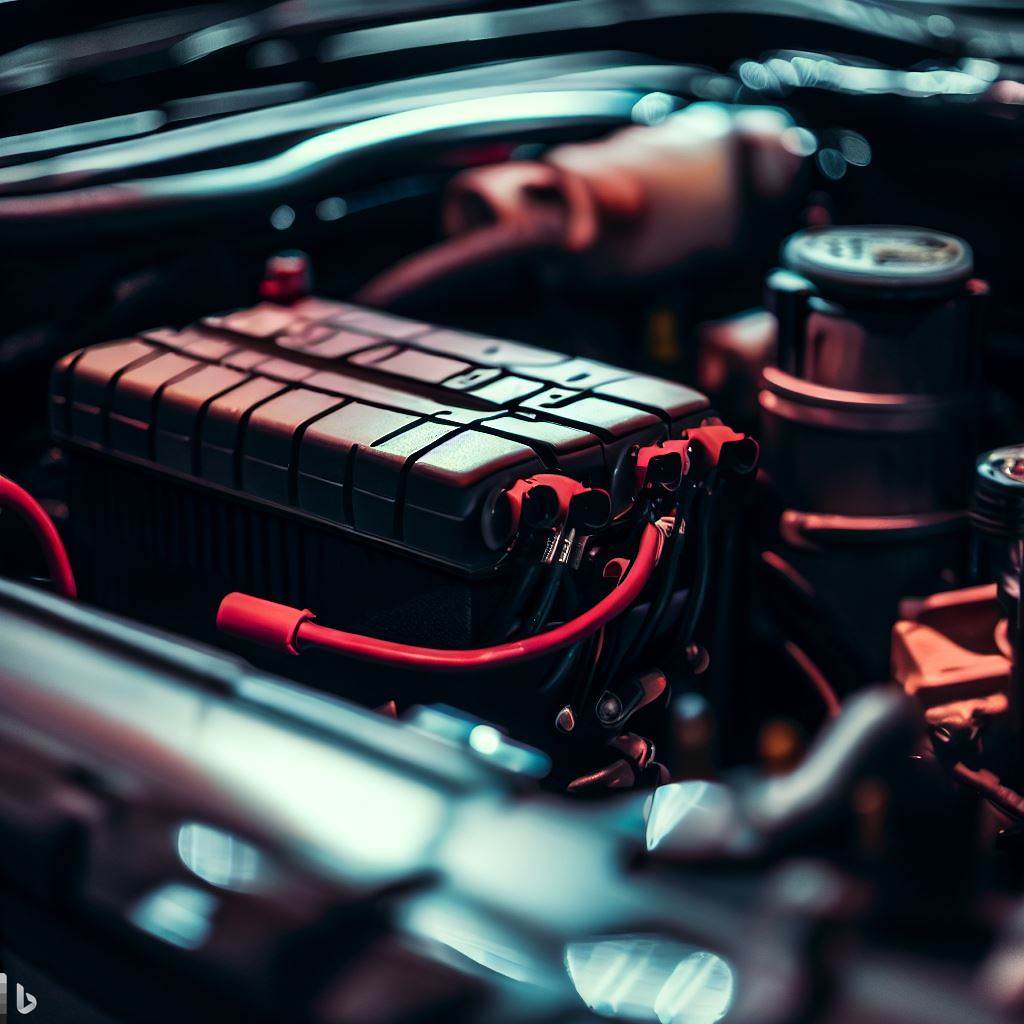
As a driver, you may have experienced the frustration of a dead car battery at least once in your lifetime. When this happens, the standard solution is to jumpstart or replace the battery. However, what if there was a way for your car battery to recharge? Can a Car Battery Recharge Itself?
A car battery is a critical component that allows a vehicle’s electrical system to start up and power all the electronics in a car or truck. However, most drivers have experienced the frustration of a dead battery that will not crank the engine.
This often leads to the question – can a car battery recharge itself over time? Or is a dead battery hopeless without external electrical power? While a car battery cannot fully recharge independently, some natural processes can partially recharge a depleted battery over several weeks or months. However, specific chemical reactions and physics concepts limit the degree to which a battery can self-recharge.
Understanding how a car battery works sheds light on why it cannot spontaneously come back to life after dying. With maintenance and proper electrical connections, though, drivers can ensure their car battery remains charged, minimizing the chances of a sudden, unexpected failure.
Recharging your battery promptly after it dies, rather than waiting and hoping it will recover, is key to ensuring a functioning electrical system.
In this article, we will explore the possibility of self-recharging car batteries and the latest technological advancements that enable this. We will discuss the basics of car batteries, the different types available, and the benefits of a self-recharging car battery.
Key Takeaways:
- Self-recharging car batteries are a recent development in battery technology.
- Car batteries are rechargeable and come in different types.
- Renewable energy sources, such as solar power, can be used to recharge car batteries.
Understanding the Basics of Car Batteries
Before diving into self-charging car batteries, it’s important to understand how car batteries generally recharge. A car battery provides electrical power to start the vehicle and operate its various electrical systems. The battery is typically recharged while the car is running, through a process called alternator charging.
Here is a comprehensive section on how a car battery works:
A car battery is a lead-acid battery that works through a chemical reaction between lead plates and sulfuric acid. Inside the battery, several cells contain sets of lead plates immersed in sulfuric acid. One set of plates is made from lead oxide, while the other set is made from metallic lead. The chemical reaction between the lead plates and sulfuric acid releases electrons, which allow electrical current to flow.
Specifically, the sulfuric acid breaks down the lead oxide plates through reduction. This generates electrons from the lead oxide plates. The lead oxide plates then become made of pure lead. At the same time, the sulfuric acid oxidizes the metallic lead plates, meaning it pulls electrons out. The electrons released from the lead oxide plates flow through the electrical circuit outside the battery to reach the lead plates, powering whatever device is connected to the battery. This flow of electrons is the electric current.
Over time, the lead oxide and the sulfuric acid become depleted through this process inside the battery cells. Once they are used up, no more electrons can be released, and the chemical reaction stops. This is why a car battery eventually dies once its chemical components are used up from powering the starter and electronics repeatedly. The reduction and oxidation processes stop occurring in the cells, generating no more electric current.
When the car is running, the alternator generates an electrical current to power the car’s electrical systems and recharge the battery. The alternator works with the battery to maintain a stable voltage level, ensuring the car’s electrical systems operate smoothly.
It’s worth noting that not all car batteries are created equal. Different types of car batteries are available in the market, with varying levels of performance and durability. Some common types of car batteries include lead-acid batteries, lithium-ion batteries, and nickel-metal hydride batteries.
You have a few options if you need to recharge your car battery. You can recharge it using an external battery charger, or by driving the car for an extended period of time to allow the alternator to recharge the battery fully.
Now that you have a basic understanding of how car batteries recharge let’s dive deeper into the concept of self-charging car batteries.
The Natural Recharging Process

While a dead car battery cannot fully recharge on its own, some minor natural processes can slowly put some charge back into a battery over a long period of time. Two main processes account for this partial recharging – chemical diffusion and sulfation removal.
Chemical diffusion describes the minor movement of electrons and sulfuric acid molecules back into the lead plates inside the battery over several weeks. Since the fluid acid makes contact with the lead oxide and lead plates, some chemical diffusion occurs to naturally move a small amount of chemicals back into the plates. This can slowly reverse a bit of the oxidation and reduction reactions and generate a minor amount of electric current.
Sulfation removal is another process where battery charge can slightly recover. Over time, lead sulfate crystals accumulate on the lead plates inside the battery, which inhibits the chemical reaction. As the battery sits unused for weeks or months, some of these sulfur crystals dissipate from the plates, partially cleaning them. This also marginally allows the lead and sulfuric acid to begin reacting again to produce a small amount of electricity.
However, both natural processes are very slow and only replace a tiny fraction of the depleted chemical components in the battery. This makes it impossible for the battery to recharge on its own through these minor reactions.
The natural recharging is so minimal that a dead battery left sitting will never fully recover enough charge to start a vehicle – an external electrical source is required for a true recharge.
The limitations of the natural recharging processes in car batteries
While chemical diffusion and sulfation removal can put some charge back into a depleted car battery, the natural recharging is extremely limited and slow. These processes can take weeks or even months to recover just a minor charge. There are a few key reasons why the natural recharging is so marginal:
- The chemical diffusion only replaces a tiny fraction of the sulfate and lead used in the plates. The minor movement of electrons and acid cannot reconstitute the complex electrochemical reactions that generate significant electric current.
- Sulfation removal only clears some buildup on the plates but does not replace the lead oxide or metallic lead needed for the reaction. The basic components needed are still lacking.
- The lead sulfate crystals and depletion of lead oxide happen much faster than these reversal processes. So, the natural processes can’t keep up with the discharge.
- Physics principles limit how much electric potential and current can build up naturally. The electrochemical reaction has an upper limit without an external voltage applied.
- The natural recharge declines over time. The minor reactions taper off rather than fully recharging.
Overall, while not completely inert, a dead battery relies on the vehicle’s alternator and an external source of electricity to provide the significant jolt of power required to reverse the chemical reactions and recharge from a fully depleted state. The minor natural processes cannot overcome the physical and chemical limitations to recharge a dead car battery fully.
Exploring Self-Recharging Car Battery Technology
If you’re tired of dealing with dead car batteries, you may be wondering if there’s a way for your car battery to recharge itself. The answer lies in the latest technological advancements allowing car batteries to regenerate and recover energy. This is known as self-recharging car battery technology. This technology is mainly found in Hybrid cars.
Self-recharging car batteries use various methods to regenerate their energy, such as using regenerative braking or solar power. Some of these methods are automatic, allowing your car battery to recharge without any intervention.
Car battery regeneration is one of the most exciting advancements in self-recharging car battery technology. This technology uses lead-acid battery regeneration to recover lost capacity and extend the life of your car battery. Car battery regeneration can significantly reduce the number of batteries in landfills, making it a more environmentally friendly option.
| Method | Description |
|---|---|
| Regenerative Braking | This method uses kinetic energy from braking to recharge the car battery. |
| Solar Power | Solar panels mounted on the car can convert sunlight into electrical energy to recharge the battery. |
| Lead-Acid Battery Regeneration | This process uses chemicals to recover lost capacity and extend the life of the car battery. |
Another emerging technology in self-recharging car batteries is using renewable energy, such as wind or hydroelectric power, to recharge the battery. This makes the car battery a more sustainable and renewable source of energy.
While self-recharging car battery technology is still in its early stages, the potential benefits are enormous. Not only can it improve the lifespan of car batteries, but it can also reduce waste and make cars more environmentally friendly. As this technology continues to develop and improve, we can look forward to a future where car batteries can sustain themselves and provide a more sustainable way to power our vehicles.
Maintaining A Battery Charge
Here is a comprehensive section on maintaining car battery charge:
While car batteries cannot fully recharge themselves, drivers can take proactive steps to properly maintain their battery’s charge and maximize its lifespan:
- Drive regularly – Driving your car allows the alternator to continuously recharge the battery while the engine is running. This reverses any small power drain and keeps the battery topped off.
- Check voltage – Use a voltmeter to check your battery’s charge periodically. 12.4-12.6 volts indicates a full charge. Below 12 volts indicates partial discharge.
- Recharge when low – Don’t let your battery fully die. Recharge it with a trickle charger as soon as voltage drops below 12 volts. Waiting until it is dead makes recharging much harder.
- Use battery tenders – When storing vehicles for weeks or months, use a battery tender to provide a maintenance trickle charge that offsets self-discharge.
- Keep connections clean – Check for corrosion on battery terminals and wires. Clean them periodically to allow full electrical contact for recharging.
- Replace old batteries – Most car batteries last 3-5 years. Replace older batteries before they fail and strand you.
Following these steps provides the external power a car battery requires to overcome its innate chemical/physical limits and remain charged for reliable starting. While no car battery recharges itself fully, proper maintenance can avoid being left with a dead battery.
The Potential of Renewable Energy in Car Batteries
As the world moves towards cleaner and more sustainable energy sources, the automobile industry has begun to explore the potential of renewable energy in car batteries. One of the most promising developments in this area is the concept of the renewable car battery. A renewable car battery can be recharged using renewable energy sources, such as solar power or regenerative braking, rather than relying solely on traditional fuel sources.
The use of renewable energy in car batteries offers some benefits. For example, it can reduce the carbon footprint of vehicles and decrease dependence on fossil fuels. In addition, it can help to lower the overall cost of operating a vehicle by reducing the need for frequent trips to the gas station.
One of the most significant challenges in developing renewable car batteries is the need for efficient and cost-effective charging methods. Currently, most renewable energy sources are intermittent and variable, making it difficult to ensure a consistent and reliable supply of power to recharge car batteries. However, advancements in technology are addressing this challenge and making renewable car batteries a more viable option for the future.
| Renewable Energy Source | Potential Application |
|---|---|
| Solar Power | Recharging car batteries during daylight hours |
| Regenerative Braking | Recovering energy from braking to recharge car batteries |
The use of renewable energy in car batteries is an area of ongoing research and development, with many exciting innovations on the horizon. For example, some companies are exploring the use of graphene-based batteries, which have the potential to be more efficient and longer-lasting than traditional lithium-ion batteries. Other companies are researching ways to improve the efficiency of solar power and regenerative braking to be used more effectively to recharge car batteries.
Overall, the potential of renewable energy in car batteries is significant. As technology advances, we can expect to see more and more vehicles powered by renewable energy sources, with all of the associated benefits of cleaner and more sustainable energy.
The Reality of Self-Sustaining Car Batteries
While the concept of a self-sustaining car battery sounds appealing, the reality is that achieving complete energy recovery is a challenging task. Self-sustaining car batteries rely on regenerative braking and other energy recovery systems to recharge themselves, but their performance can be affected by a variety of factors.
Firstly, the efficiency of regenerative braking can be impacted by driving habits, terrain, and weather conditions. If you frequently drive uphill or in stop-and-go traffic, for example, regenerative braking may not be able to recover enough energy to recharge the battery fully. Extreme temperatures can also affect the battery’s ability to recover and store energy.
Another challenge is the practicality of achieving complete energy recovery. While self-sustaining car batteries can recover some energy, recharging them fully may not be enough. Therefore, car owners may still rely on traditional charging methods, such as plugging the battery into an electrical outlet, to ensure optimal battery performance.
Finally, the environmental impact of self-sustaining car batteries is still being evaluated. While they can potentially reduce reliance on traditional fuel sources, the manufacturing and disposing these batteries may have significant environmental consequences.
Overall, self-sustaining car batteries may not completely solve car battery energy recovery. Instead, responsible usage and regular maintenance, such as keeping the battery clean and properly inflated, remain crucial for ensuring optimal battery performance.
Future Prospects and Innovations in Car Battery Technology
As technology advances, so does the potential for car batteries to become more sustainable and efficient. Innovations are being made to improve the recharge time and energy capacity of car batteries and increase their lifespan.
One of the most promising advancements in car battery technology is the development of renewable car batteries. Car batteries can be recharged without relying on traditional fossil fuels by harnessing the power of renewable energy sources, such as solar and wind power.
Another area of innovation is the self-recharging car battery. New technologies are being developed that allow car batteries to regenerate and recover energy, reducing the need for external charging.
One such technology is the use of regenerative braking, which captures the energy generated by braking and converts it into electricity to recharge the battery. Another is advanced sensors, which monitor the battery’s usage and adjust its energy output accordingly to prolong its lifespan.
Researchers are also developing solid-state batteries, which use a solid electrolyte instead of a liquid one, making them more efficient and safer than traditional car batteries. These batteries can also fasten, reducing the time it takes to recharge a car battery.
While these innovations are promising, there are still limitations to self-sustaining car batteries. The technology is not yet advanced enough to achieve complete energy recovery, and there are still environmental concerns surrounding the production and disposal of car batteries.
As research continues, it is important to remember the importance of responsible battery usage and regular maintenance. Taking care of your car battery can help ensure optimal performance and reduce your environmental impact.
Which AGM Battery is the Best for Recharging Itself?
Looking for the best agm battery for car audio? Look no further! When it comes to recharging itself, the keyword best agm battery for car audio stands out as a reliable option. With advanced technology, these AGM batteries have superior recharge capabilities, making them ideal for car audio systems. Enjoy uninterrupted audio quality with the best AGM battery for car audio.
Conclusion
After exploring the latest advancements in car battery technology, it is clear that a car battery cannot fully recharge itself. While self-recharging and renewable energy sources, such as regenerative braking and solar power, can prolong a battery’s life, they cannot recover completely.
Regular maintenance and responsible usage are essential to ensure optimal battery performance. This includes monitoring the battery’s charge level, using energy-efficient systems, and avoiding leaving your car idle for extended periods.
Looking towards the future, the ongoing research and development in car battery technology offers exciting prospects for cleaner and more efficient energy sources. Emerging innovations, such as solid-state batteries and fast-charging capabilities, have the potential to revolutionize the way car batteries recharge and perform.
In conclusion, while a car battery cannot recharge itself, the advancements in renewable energy sources and emerging technology provide optimistic prospects for the future of car battery performance and sustainability.
